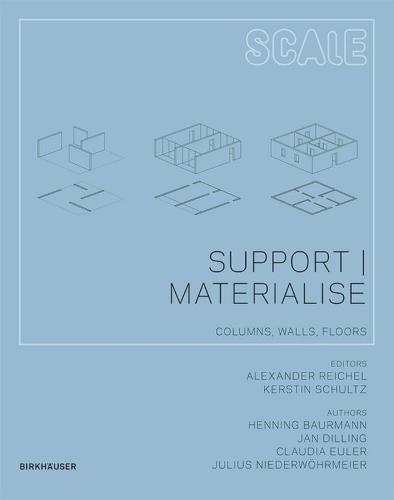Overview
Columns, walls and floors make up the skeleton of nearly every building. This third volume in the series Scale, Support I Materialise, takes an in-depth look at these load-bearing structures, covering the development and realization of appropriate constructions from idea and design intention all the way to constructional implementation.
Full Product Details
Author: Henning Baurmann , Jan Dilling , Claudia Euler , Julius Niederwöhrmeier
Publisher: Birkhauser
Imprint: Birkhauser
Volume: 3
Dimensions:
Width: 22.00cm
, Height: 1.50cm
, Length: 28.00cm
Weight: 0.760kg
ISBN: 9783034600408
ISBN 10: 3034600402
Pages: 176
Publication Date: 17 October 2013
Recommended Age: College Graduate Student
Audience:
General/trade
,
General
Format: Paperback
Publisher's Status: Active
Availability: In Print 
This item will be ordered in for you from one of our suppliers. Upon receipt, we will promptly dispatch it out to you. For in store availability, please contact us.
Table of Contents
Chapter 1 Introduction 1.1. Introduction to the subject - The cultural history of load-bearing structures - Prospects, visions (mega-structures, flexible structures, dismantling/reconstruction, new materials) 1.2 Building site - regional, topographical features (climate, surroundings, neighbourhood) 1.3 Building Which load-bearing structure is suitable for which purposes: scale and uses: hall buildings, housing construction, office construction? 1.4 The design quality of bearing structures The difference between visible and non-visible bearing structures 1.5 Bearing structures - Overview of bearing structures: from linear (shell) to two-dimensional (wall, ceiling) structures - Principles underlying bearing structures – foundations, support, bracing - Components – support, wall, ceiling 1.6 Static systems - Criteria favouring a specific bearing structure: advantages and disadvantages - shell construction (cross-wall structures?), slab construction, hall building, space frames, shells, hybrid structures, tensile structures, membranes / foils / textiles 1.7 Demands placed on material properties - Transfer of tensile forces, pressure, bending stress - Spans, apertures, maximum sizes - Deflexion, jointing [Fugen]/grooves [Nuten]?? - Preservation of structures (fire protection, soundproofing, etc.) - Integration of services 1.8 Sustainability - Use, extension, (general definitions) - Maintenance, servicing, longevity, extension/addition, conversion/new use, disassembly, dismantling, recycling - Manufacture + waste disposal, environmental compatibility (general definitions, comparison of building materials) Primary energy requirement, use of resources, damage to environment by harmful substances, life cycle - Cost effectiveness and costs (general definitions, building materials / comparison of bearing systems) - Production costs 2nd Chapter Structural types 2.1. Wall construction (including cross-wall construction and slab construction) Presentation of bearing systems (loads, bearing structures, bracing) - Walls (focus on load-bearing walls; difference to non-bearing walls) - Ceilings, main beams, suspender beams Realisation (as relating to the walls and ceilings?) Masonry (bricks, concrete blocks…) - Reinforced concrete - Connections/drawings - (Connection of the individual elements, layer structure, connections, wall floor ceiling, each between the same and different materials??? 2.2 Shell structures (including half-timber structures) - Bearing systems (loads, bearing structures, bracing) - Building elements, function/role: supports, reinforcing elements (core, ceilings, walls, cables…), girders (including truss girders in this case), in-fills between the building elements, walls and ceilings Realisation: Steel, reinforced concrete, wood - Connections/drawings: Joining of individual parts, layered construction, connections, wall floor ceiling, each between the same and different materials??? 2.3 Special forms - Hybrid (definition of a hybrid here: Combination of different support systems – distinguished from combinations of materials that act as bearing elements, e.g. Reinforced concrete, structural wood building…) - shell construction - a hall building - space frames - cable-net - membranes - bridges 3rd Chapter Examples (8-10 Projects) - Shell construction: reinforced concrete, wood, steel - Wall construction method: reinforced concrete, masonry, cross-wall construction 4. Chapter Appendix - References to standards and guidelines (selection) - Associations - Links - Secondary literature - Tables - Manufacturers - Photo credits/acknowledgements
Reviews
Author Information
Alexander Reichel, Reichel Architekten BDA, Kassel; Kerstin Schultz, liquid architekten, Hochschule Darmstadt.
Tab Content 6
Author Website:
Customer Reviews
Recent Reviews
No review item found!
Add your own review!
Countries Available
All regions
|




